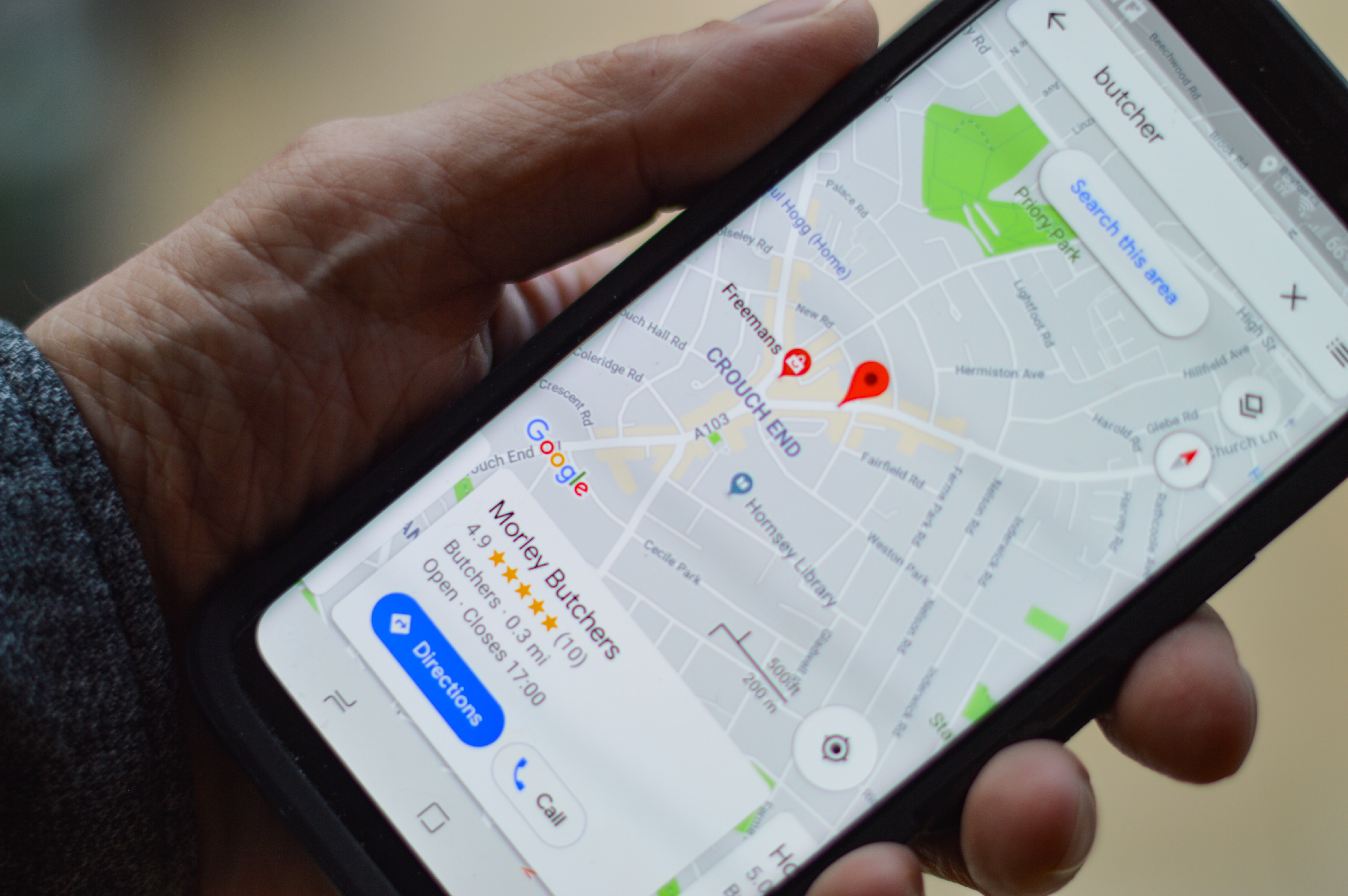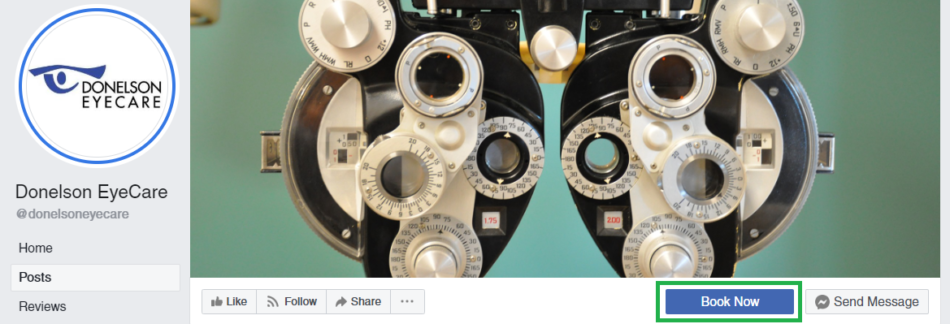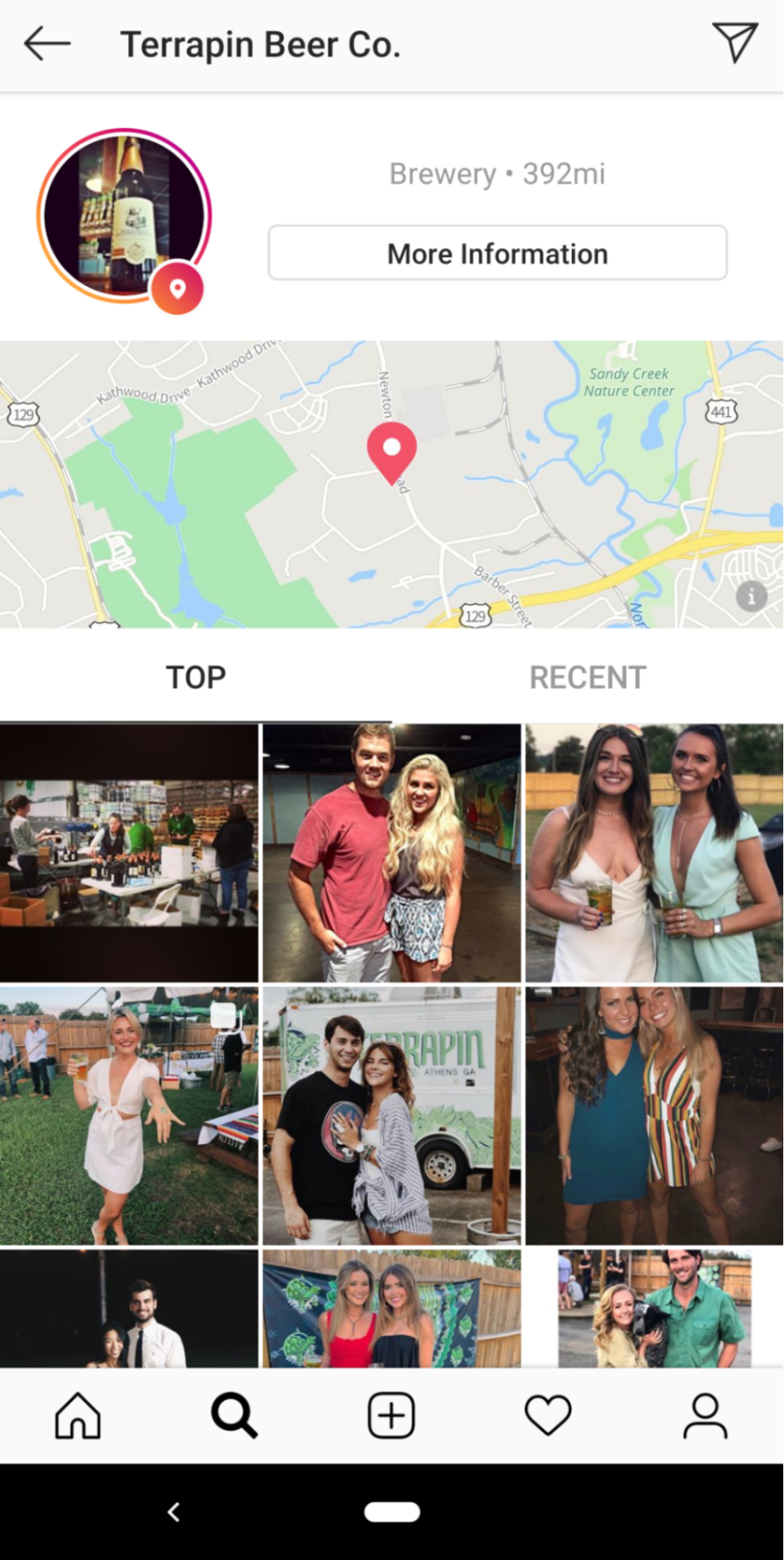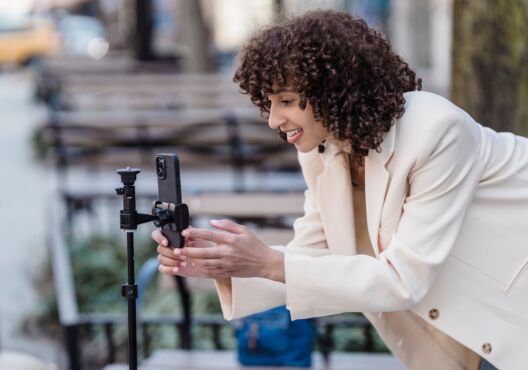It’s no secret that local businesses should be active on social media in 2020. That said, the impact of social media on local SEO often gets swept under the rug. That’s because the connection between social media and search rankings hasn’t always been crystal clear.
Here’s some food for thought: over half of consumers rely on social media to research products and services. Also, note that social profiles often show up on the first page of Google searches for business.
Social Media for Local SEO: A Platform-by-Platform Approach
It’s advised to use social media strategically to get a better search result ranking. For starters, your social profiles need to be optimized to funnel followers directly to your website.
Meanwhile, social media provides endless opportunities to generate linkless backlinks. The concept is simple: any sort of link or online mention of your brand, including social mentions, is a net positive to Google.
Below is a platform-by-platform breakdown of how to actively use social media to improve your local search efforts.
With the largest and most active user-base across social media, Facebook should be your top priority when it comes to local SEO. Note that the majority of consumers will contact a business only if they have a mobile-friendly website.
Facebook is oftentimes a supplement or full-blown replacement for traditional small business sites. The platform allows you to promote your services and accept bookings directly. It’s also a treasure trove of potential traffic and SERP appearances, given that your profile is properly optimized.
For starters, strive to fill in as much information as possible within your Page’s “About” section.
Your business details and company overview offer plenty of opportunities to not only showcase your expertise, but also target relevant industry keywords. For example, check out how Massachusetts Eye and Ear integrates service-related terms such in their “Products” tab.
One of the most important elements to include on Facebook for local SEO is your location. Given that 86% of people look up the Google Maps locations of businesses, having your location front-and-center makes it easier for local customers to find you.
Don’t neglect additional opportunities to sprinkle relevant keywords throughout your Page by enabling Facebook’s “Services” tab. This tab allows you to highlight specific services that your business offers that those searching via Google might likewise be looking for.
In turn, those services and descriptions can pop up in Google results. For example, the Facebook Page shown above ranks for “Bay Area CoolSculpting” which is featured prominently throughout their profile.
 Oh, and don’t neglect the need to curate customer reviews and ratings for your Facebook Page. These conversations represent additional opportunities for Google to crawl your Page for keywords (note: “great hotel bar” and “romantic atmosphere” in the example below).
Oh, and don’t neglect the need to curate customer reviews and ratings for your Facebook Page. These conversations represent additional opportunities for Google to crawl your Page for keywords (note: “great hotel bar” and “romantic atmosphere” in the example below).
Remember that Facebook reviews and star-ratings will show up alongside your business name in a Google search. Half of the people want to see at least a four-star rating before they’ll consider a business, signaling just how important Facebook reviews are for winning over customers via search.
Beyond page setup, make a point to regularly post content that points back to your blog posts and offers on your website. These are the sort of linkless backlinks we were talking about earlier.
 Another brilliant move to funnel more traffic to your site is Facebook’s call-to-action button. Simply put, this acts as a direct line from your Facebook Page to your booking platform or appointment page on-site.
Another brilliant move to funnel more traffic to your site is Facebook’s call-to-action button. Simply put, this acts as a direct line from your Facebook Page to your booking platform or appointment page on-site.
In short, Facebook offers tons of opportunities to drive traffic to your site and promote relevant keywords.
Instagram can really help local businesses flourish. In fact, a staggering 90% of users follow at least one business profile. While the platform might seem limited in terms of SEO, Instagram is an underrated traffic source and can be used to boost your search presence.
Your Instagram bio is perhaps the most important piece of the puzzle. With only one link for your entire profile, it’s crucial that your bio link is sending followers to an appropriate page.
Rather than include a generic homepage link, drive traffic to a specific promotion or mobile-friendly landing page that’s tap and swipe-friendly. Also, make sure that you’re tracking link clicks and traffic from Instagram to better understand how the platform is performing for your site.
Link-shorteners and trackers such as Bitly and Rebrandly can do this for you, all the while saving valuable space within your bio. Tools like LinkTree are also useful for more accurately funneling Instagram traffic to your site based on their intent. For example, LinkTree appears like a typical URL shortener…
Here’s another tip: if your business has a physical location, encourage in-person tagging and user-generated content.
For example, Terrapin promotes their #TakeTerrapin hashtag for customers to take photos of their drinks, including at their physical brewery location. Coupled with a Google Map’s listing, this is yet another avenue for customers to land on your business through Google.
It’s also important to think about how to incorporate local hashtags in your captions. Hashtags do show up via Google searches, believe it or not. We recommend that you follow these best practices for writing Instagram captions in mind.
Here’s a good example of a geo-specific caption and hashtags for reference.
There’s plenty of debate regarding what Twitter is really worth for smaller, local businesses these days.
If so, Twitter is a fantastic content distribution channel to get your links in front of customers and other industry players. Coupled with hashtags, expanding the reach of your promotions is always a good idea and Twitter can make it happen.
Similarly to Instagram, it’s best to carefully consider how you set up your Twitter bio and how that real estate can benefit your search efforts. Including your homepage, relevant keywords and hashtags related to your business is a solid starting point.
For example, this Portland marketing firm highlights where they’re from and the services that they offer in addition to a homepage link.
 To point visitors to your latest promotions, we also recommend including a pinned tweet on your profile. Since this post sits atop your feed and is your only tweet “above the fold,” it’s a great space to grab your followers’ attention and point them to your site.
To point visitors to your latest promotions, we also recommend including a pinned tweet on your profile. Since this post sits atop your feed and is your only tweet “above the fold,” it’s a great space to grab your followers’ attention and point them to your site.
LinkedIn is a must-have network for anyone in the B2B space, especially considering that the platform is responsible for 80% of B2B leads.
Comparably to Facebook, there are many opportunities throughout your company details and “About” section to feature keywords that impact your search rankings.
LinkedIn allows you 2,000 words to elaborate on what your company has to offer, so make them count! Additionally, the “Specialties” field allows you to hit on specific services akin to Facebook’s “Services” tab.
Note that these tips are fair game for B2C companies where your LinkedIn presence might be more “set and forget.” A long-form, keyword-rich “About” is better than just leaving the space blank or bare of relevant terms.
For B2B companies posting lead-generating content such as blog posts, videos or e-books, make sure that you take advantage of your employees’ presence on LinkedIn in addition to your company profile.
Fact: people share promotional 24x more often from people rather than company profiles on social media. By having multiple employees share each new promotion or piece of content, you open your business up to a ton of potential traffic and reach that’s next to impossible to come by on your own.
Cross-Platform Tips for Local Social Media SEO
To wrap things up, let’s quickly dive into some general tips and best practices to consider if you’re looking to support your SEO efforts with social media.
Mind Your Captions and Keywords
When posting on Facebook, Twitter or LinkedIn, make a point to include keywords or a call-to-action to your copy. Doing so is yet another opportunity to use keywords or provide a call-to-action to encourage clicks.
Dropping links by themselves won’t do you any favors for today’s social algorithms.
Maximize the Engagement Rate of Your Posts
No matter how you slice it, social algorithms can be fickle.
That’s why we recommend experimenting with different types of posts to understand what scores the most clicks and therefore more traffic to your site. For example, content strategies that increase engagement on Facebook often include interactive content (think: polls and questions) or visual (think: photos, infographics or videos).
Understanding which posts drive interactions shouldn’t be a guessing game, either. Tools such as Sotrender make a cinch to monitor your social interactions and determine the types of content that score the most engagement per network.
Regardless of what you’re posting, consistency does count. A business that publishes regularly and interacts with social followers is more likely to drive traffic than the business that only posts once per week.
Using Sotrender’s analytics metrics that are included in the tool, you can determine whether your strategy has been successful. Here are a few of the metrics provided:
- Reach (organic, paid, viral)
- Engagement (Interactivity Index, user activity and reactions, consumption, people talking about this)
- User demographics (gender, location, language)
- Top-performing content (to see which posts had the most likes, reach, or total engagement)
Monitor You Social Traffic and ROI
Finally, you need to figure out which social platforms are resulting in the most ROI for your business.
After all, your schedule and resources are limited. Businesses should spend their time wisely and on the marketing channels that make the most sense.
In other words, where is your audience more engaged? Which social channels are resulting in legitimate leads and traffic? As noted earlier, URL trackers can help keep an eye on what’s driving traffic and where your social visitors are coming from.
But robust tools like Sotrender can do you one better, breaking down individual clicks per platform alongside content performance analytics on social media.
Easy-to-read reports are prime for sharing with clients and colleagues alike to break down what’s working and what isn’t via social.
And of course, monitor social media traffic in Google Analytics. Doing so provides you a bird’s-eye view of your social traffic and how each platform stacks up.
For example, you might discover that you’re getting the most traffic from Facebook but your Twitter traffic is actually clicking around and converting once they’re on-site.
Based on this data, you can determine which social channels deserve the most attention and what promotional tactics to prioritize for your business.
Is Your Social Presence Optimized for Local SEO?
Fine-tuning your social media for local SEO should be a matter of “when,” not “if.”
The tips above go hand in hand with the best practices of social media for local businesses. Although these small changes to your social presence might not seem like much, they can make a big difference they work in tandem.
After all, anything you can do to make your business more discoverable is a plus, right? By sticking to the principles above, you can create more opportunities for customers to find you via search and social for the long-term.




















